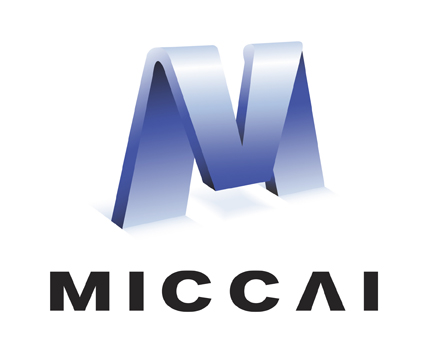Abstract
Generative adversarial network (GAN) has been a prevalence in color normalization techniques to assist deep learning analysis in H&E stained histopathology images. The widespread adoption of GAN has effectively released pathologists from the heavy manual workload in the conventional template image selection. However, the transformation might cause significant information loss, or generate undesirable results such as mode collapse in all likelihood, which may affect the performance in the succeeding diagnostic task. To address the issue, we propose a contrastive learning method with a color-variation constraint, which maximally retains the recognizable phenotypic features at the training of a color-normalization GAN. In a self-supervised manner, the discriminative tissue patches across multiple types of tumors are clustered, taken as the salient input to feed the GAN. Empirically, the model is evaluated by public datasets of large cohorts on different cancer diseases from TCGA and Camelyon16. We show better phenotypical recognizability along with an improved performance in the histology image classification.
Access this chapter
Tax calculation will be finalised at checkout
Purchases are for personal use only
Similar content being viewed by others
References
Almahairi, A., Rajeshwar, S., Sordoni, A., Bachman, P., Courville, A.: Augmented cycleGAN: learning many-to-many mappings from unpaired data. In: International Conference on Machine Learning, pp. 195–204. PMLR (2018)
Bejnordi, B.E., et al.: Diagnostic assessment of deep learning algorithms for detection of lymph node metastases in women with breast cancer. JAMA 318(22), 2199–2210 (2017)
Ciompi, F., et al.: The importance of stain normalization in colorectal tissue classification with convolutional networks. In: ISBI, pp. 160–163. IEEE (2017)
He, K., Zhang, X., Ren, S., Sun, J.: Deep residual learning for image recognition. In: Proceedings of the IEEE Conference on Computer Vision and Pattern Recognition, pp. 770–778 (2016)
Hosseini, M.S., et al.: Atlas of digital pathology: a generalized hierarchical histological tissue type-annotated database for deep learning. In: Proceedings of the IEEE/CVF Conference on Computer Vision and Pattern Recognition, pp. 11747–11756 (2019)
Kather, J.N., et al.: 100,000 histological images of human colorectal cancer and healthy tissue. In: Zenodo. Zenodo (2018)
Kather, J.N., et al.: Deep learning can predict microsatellite instability directly from histology in gastrointestinal cancer. Nat. Med. 25(7), 1054–1056 (2019)
Ke, J., Shen, Y., Jiang, X., Guo, Y., Chen, Y., Liang, X.: Multiple-datasets and multiple-label based color normalization in histopathology with cGAN. In: Medical Imaging 2021: Digital Pathology. vol. 11603, p. 1160310. International Society for Optics and Photonics (2021)
Khan, A.M., et al.: A nonlinear mapping approach to stain normalization in digital histopathology images using image-specific color deconvolution. IEEE Trans. Biomed. Eng. 61(6), 1729–1738 (2014)
Macenko, M., et al.: A method for normalizing histology slides for quantitative analysis. In: ISBI: From Nano to Macro, pp. 1107–1110. IEEE (2009)
Nadeem, S., Hollmann, T., Tannenbaum, A.: Multimarginal wasserstein barycenter for stain normalization and augmentation. In: Martel, A.L., et al. (eds.) MICCAI 2020. LNCS, vol. 12265, pp. 362–371. Springer, Cham (2020). https://doi.org/10.1007/978-3-030-59722-1_35
Nishar, H., Chavanke, N., Singhal, N.: Histopathological stain transfer using style transfer network with adversarial loss. In: Martel, A.L., et al. (eds.) MICCAI 2020. LNCS, vol. 12265, pp. 330–340. Springer, Cham (2020). https://doi.org/10.1007/978-3-030-59722-1_32
Park, J., et al.: Aggregation of cohorts for histopathological diagnosis with deep morphological analysis. Sci. Rep. 11(1), 1–11 (2021)
Reinhard, E., et al.: Color transfer between images. IEEE Comput. Graph. Appl. 21(5), 34–41 (2001)
Ronneberger, O., Fischer, P., Brox, T.: U-net: convolutional networks for biomedical image segmentation. In: Navab, N., Hornegger, J., Wells, W.M., Frangi, A.F. (eds.) MICCAI 2015. LNCS, vol. 9351, pp. 234–241. Springer, Cham (2015). https://doi.org/10.1007/978-3-319-24574-4_28
Shaban, M.T., et al.: StainGAN: stain style transfer for digital histological images. In: ISBI, pp. 953–956. IEEE (2019)
Shen, Y., Ke, J.: A deformable CRF model for histopathology whole-slide image classification. In: Martel, A.L., et al. (eds.) MICCAI 2020. LNCS, vol. 12265, pp. 500–508. Springer, Cham (2020). https://doi.org/10.1007/978-3-030-59722-1_48
Tellez, D., et al.: Quantifying the effects of data augmentation and stain color normalization in convolutional neural networks for computational pathology. Med. Image Anal. 58, 101544 (2019)
Vahadane, A., et al.: Structure-preserving color normalization and sparse stain separation for histological images. IEEE Trans. Med. Imaging 35(8), 1962–1971 (2016)
Wang, Z., et al.: Image quality assessment: from error visibility to structural similarity. IEEE Trans. Image Process. 13(4), 600–612 (2004)
Zhang, L., et al.: FSIM: a feature similarity index for image quality assessment. IEEE Trans. Image Process. 20(8), 2378–2386 (2011)
Zhu, J.Y., Park, T., Isola, P., Efros, A.A.: Unpaired image-to-image translation using cycle-consistent adversarial networks. In: Proceedings of the IEEE International Conference on Computer Vision, pp. 2223–2232 (2017)
Author information
Authors and Affiliations
Corresponding author
Editor information
Editors and Affiliations
Rights and permissions
Copyright information
© 2021 Springer Nature Switzerland AG
About this paper
Cite this paper
Ke, J., Shen, Y., Liang, X., Shen, D. (2021). Contrastive Learning Based Stain Normalization Across Multiple Tumor in Histopathology. In: de Bruijne, M., et al. Medical Image Computing and Computer Assisted Intervention – MICCAI 2021. MICCAI 2021. Lecture Notes in Computer Science(), vol 12908. Springer, Cham. https://doi.org/10.1007/978-3-030-87237-3_55
Download citation
DOI: https://doi.org/10.1007/978-3-030-87237-3_55
Published:
Publisher Name: Springer, Cham
Print ISBN: 978-3-030-87236-6
Online ISBN: 978-3-030-87237-3
eBook Packages: Computer ScienceComputer Science (R0)


